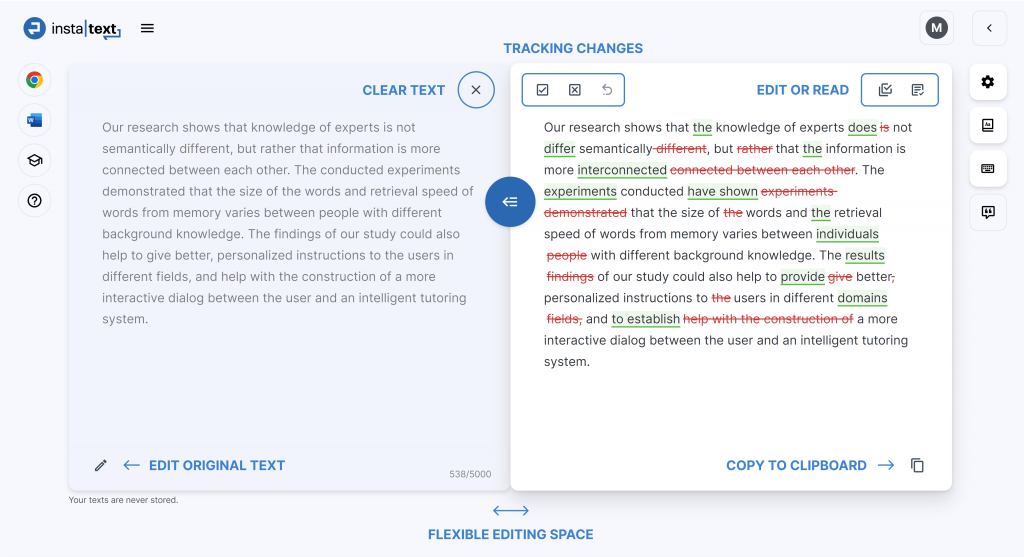I log in to LinkedIn and there it is: another debate about AI vs. human writers. I used to find these discussions interesting and often joined in, arguing that technology can never replace the human touch and that soulful writing will always be in demand.
I even wrote articles and held workshops to prove this point, perhaps subconsciously trying to convince others that human writing is still valuable.
But I had missed the point.
After months of using AI almost daily, familiarizing myself with the latest tools, and perfecting my prompt writing, I realized what I had gotten wrong—it was never about the output, but about the process; never about others, but about me.
My realization began with a quote from American author Stephen King: “Writing is refined thinking.”
That was a helpful reference when explaining the difference between writing an article myself and having AI write it. But I knew the difference was much deeper.
I couldn’t articulate these two completely different experiences until I read The Mindful Body by Dr. Ellen Langer.
Known as the “mother of mindfulness,” Dr. Langer introduces a new way of practicing mindfulness—not through meditation, but simply by paying attention.

According to her groundbreaking research, mindful observation and engagement in all aspects of our lives—or “active noticing,” as she calls it—greatly contributes to our overall physical and psychological well-being.
Everything suddenly made sense to me after I thought deeply about the word “mindfully.”
It made sense why I felt less competent and confident as a writer despite months of upskilling and learning to use AI effectively.
I understood why my heart felt heavier even though my mental load was lighter, why I was so drained despite working more efficiently, and why I felt stuck even with my writing process on autopilot.
I saw why I wasn’t enjoying my writing when my output had never looked better, why I felt unaccomplished despite churning out copy after copy, and why I struggled with grammar and spelling in handwritten notes to my loved ones, which is unusual for me.
It became clear to me how I missed the repeated use of one of ChatGPT’s favorite words in a copy I delivered at work. Despite being a self-proclaimed perfectionist with a keen eye for detail, my non-writer colleague had to point it out to me, leaving me wondering where my mind had gone.
I realized why I felt so much unexpressed emotion despite AI suggesting countless words to express myself and why it was hard to enter a state of flow despite a steady stream of words on my screen.
I also understood why my once overflowing well of inspiration felt dry despite the seemingly non-stop introduction of new AI tools and features, and why I felt less creative even though my access to resources had never been greater.
The answer was right there, clear as day: I had become a sloppy writer, simply “producing” content “mindlessly” rather than “creating” it “mindfully.”
AI has redefined “creation” and “creativity,” but I believe we all know deep down what these concepts mean to us, regardless of how others define them.
We’ve all experienced moments when time and space feel non-existent, and we all know the feeling when our chair feels like it has invisible spikes and the timer we set for a few minutes to focus on a task seems like an eternity.
I myself know very well what it feels like to be in the flow of inspired creativity, and yet I fell into the trap of over-optimization and outsourcing my passion.
I both “write to live” and “live to write.” For the first half of the day, I focus on keywords and SEO writing as part of my main job, and AI has undoubtedly made my life easier.
But my mistake came when, in my rush not to fall behind in the AI race, I extended its use to my side passion project, which is also a source of my “happy money,” as Japanese author Ken Honda puts it.
Producing a “perfect” piece of content became the be-all and end-all of my writing efforts. Instead of using AI as a tool, I relied on it entirely. I became too lazy to keep writing when ChatGPT was down. Instead of asking AI to fill in the blanks when I was feeling blank, I expected it to do all the thinking for me.
No wonder those articles never felt like me and never saw the light of day. And no wonder I lost my passion for my passion project.
That’s when I stopped and took a long, hard look back, trying to remember why I fell in love with writing in the first place and when was the last time I felt completely engrossed in writing and invigorated after hours of uninterrupted work.
It was when I wrote an article and then refined it with InstaText, my favorite editing assistant that uses advanced language technologies, but not generative AI.
It was when I dug deep into my emotions and life experiences, focusing on areas where my insights surpass AI. I carefully chose my words and thoughtfully accepted or rejected InstaText’s suggestions to ensure that my ideas were conveyed exactly as I intended.
InstaText, which I think has found the sweet spot between technology and the human touch, goes beyond its promise of helping me write more “like a native speaker.”
As with any similar tool, InstaText has different use cases. For me, it’s essential for the kind of writing I find therapeutic: a mindful act of expression.
Its few but highly efficient features keep me from getting distracted while editing. By not overwhelming me with multiple suggestions, it helps me stay focused. Its minimalist editing style allows my voice and personality to shine through, and the browser extension allows me to edit my work as I write and stay in the zone.

It doesn’t write for me from scratch, so I have to tap into my inner feelings more often, which helps keep my inspiration flowing.
It helps me strengthen my creativity muscle and sharpen my observations. Its emphasis on simplicity, clarity, brevity, and avoiding exaggeration helps me improve my communication, both in writing and in real life. It slows me down and encourages reflection.
It’s like having a skilled editor by your side, pointing out grammar and spelling mistakes to keep your writing sharp. The boost of confidence this gives me is especially helpful when I’m writing a heartfelt note by hand—something I do often and enjoy.

For me, it is also the best complementary tool to ChatGPT. Sometimes I use ChatGPT to create different versions of my ideas, which I then edit with InstaText to make them sound more natural.
The output feels like me, and the inspiration I feel while writing carries over into the rest of my day, and the sense of inner fulfillment helps me show up better in other areas of my life.
Ultimately, as Dr. Langer suggests, mindfulness is contagious. While my argument focuses on the creator and the creative process, I have no doubt that a mindfully created piece of writing engages readers much better and offers them an opportunity to reflect.
InstaText, like other similar tech-powered tools, is far from perfect, and so is what I create with its help. But for me, the process of writing with it is nothing short of perfect emotionally.
This doesn’t mean that AI writers like ChatGPT are without merit or that we should stop learning how to use technology better. The goal is to find a balance that allows us to work efficiently while having a meaningful human experience.
To achieve the right balance, we can start by identifying which parts of our tasks bring us the most joy and mindfulness, and which are less fun and engaging, and then automate accordingly while considering the purpose behind what we are doing.
In my view, a helpful approach might be this: whether it’s writing or any other craft, try not to let AI chip away at your trust and confidence in yourself and your abilities, as I once did. It’s important not to let the fear of missing out in the increasingly crowded world of AI throw you into an identity crisis, as I experienced.
Most importantly, use technology to enhance your joy, not replace it. Don’t outsource your passion, satisfaction, or—mind you—mindfulness.

As a wise man once said, the world does not need another book, another song, or another painting. But the artist does. I know I do, and I’m grateful that InstaText is helping me create the next piece in the way I enjoy most, one edit at a time.
And perhaps no quote sums it up better than this one from Howard Thurman, advisor to Martin Luther King Jr.:
“Don’t ask what the world needs. Ask what makes you come alive, and go do it. What the world needs is people who have come alive.”
Happy writing!
Author bio: Elham P. Mohammadi is a journalist with 15 years of experience and editor at ElhamX Media, where she tells the stories of entrepreneurs through 70-question interviews crafted to inform and inspire.
P.S. Read Elham’s 70-question interview with Dr. Matej Guid, co-founder and CEO of InstaText, to discover the story behind InstaText.
“It has been incredibly liberating to not agonize over every last word, secure in the knowledge that the AI has my back and will smooth out the occasional rough edge. That freedom alone boosted my daily word counts by more than 10%, which is gold dust!”
— Matthew Siege, Writer
“I can hardly imagine writing articles without InstaText. When I read through the proposed improvements, I immediately understand how the text should sound. It’s like a proofreader you can access at any time.”
— Dr. Jana Krivec, Senior Lecturer
“I found out that InstaText is a light-years away from all other applications. It is the first program that corrects not only simple grammar, but also structure, morphology, syntax and pragmatics.”
— Miran Eric, Artist and Researcher
Photos by InstaText and Andrea Pexels.


